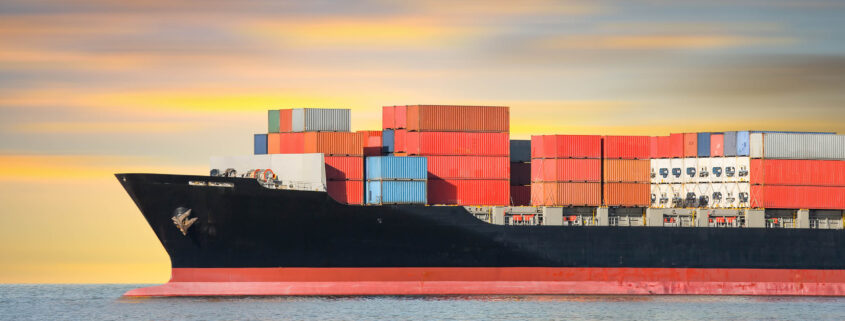Shipping Act reform would allow FMC to determine ‘unreasonable’ export rejections
The Ocean Shipping Reform Act of 2021 (H.R. 4996) includes, in part, common carriage provisions stating that ocean container carriers may not unreasonably reject export cargo if it can be loaded safely, arrive on time to be loaded and be shipped to a location that the carrier is already scheduled to ship to.
The export handling requirements in the bill are of much interest to inland ag exporters like many Specialty Soya and Grains Alliance members.
(Look for this topic to get attention at this week’s U.S. Soy Global Soy Trade Exchange & Specialty Grains Conferece in St. Louis when Federal Maritime Commission (FMC) Commissioner Carl Bentzel takes part in a panel discussion on container shipping. The SSGA breakouts session is set for 9:45 p.m. Wednesday, Aug. 25. More information on the GTE can be found here.)
Determining what is “reasonable,” particularly in this area where the steamship lines want to be able to control their business service without such hinderances, is not always a clear picture. The Journal of Commerce (JOC), in a recent analysis story, noted the legislation essentially delegated to the FMC the responsibility to determine what patterns of export rejections or avoidance by ocean carriers shall be considered “unreasonable.”
The bipartisan legislation, co-authored by Representatives John Garamendi (D-Calif.) and Dusty Johnson (R-S.D.) seeks to strengthen FMC enforcement of container ocean lines’ responsibilities in several areas.
“If you are going to be a common carrier, if you are going to U.S. ports to be part of the stream of commerce, you need to be willing to accept some very basic rules of the road, including not unduly discriminating against agricultural U.S. exports,” Johnson said at a recent media briefing.
Container exports drop at Port of LA
Port of Los Angeles (POLA) Executive Director Gene Seroka last week delivered his monthly port performance news briefing. While July saw the United States’ largest container port continue a run of 12 consecutive months of year-over-year growth, Seroka lamented the steep decline in exports and shined a critical spotlight on the steep rise in the shipping of empty containers back to Asia.
Other notables from the briefing:
- Imports continued to grow at POLA – up to 470,000 TEU (twenty-foot equivalents, the standard measure for container volumes) in July.
- Yet loaded exports fell to only 91,000 TEU – down a whopping 27.6% year-over-year for July. That made for the lowest number of loaded exports since 2005.
- Ocean carriers shipped a record number of empty containers back to Asia – 331,000 TEU’s – up 20.4% from the previous year.
- Empty container exports are now 3 to 1 over loaded container exports of all products out of POLA.
“The largest export commodity now going out of LA is air,” said Seroka, who has long been a strong advocate for increasing U.S. agricultural exports during his time at POLA and previously as the North American president of APL shipping line.
More coverage here.
China faces congestion disruptions, too
Although it hasn’t gotten as much public recognition as the container ship congestion off the California and other West Coast ports, there is another big, congested clog of ships causing supply chain gridlock.
It’s in bulker ships parked off of docks near the Yangtze River system in China.
Spot rates for bulk shipping are also on the climb, affecting costs and availability of ships to haul U.S. commodity soybeans, corn and wheat to and from the United States’ largest customer.
Go here for more detailed coverage.
Compiled by Bruce Abbe, SSGA strategic adviser for trade and transportation







Leave a Reply
Want to join the discussion?Feel free to contribute!